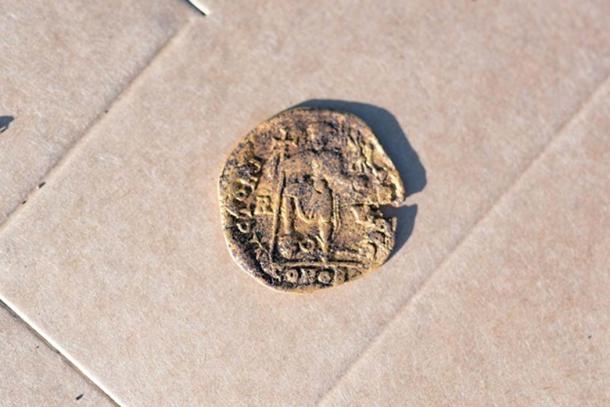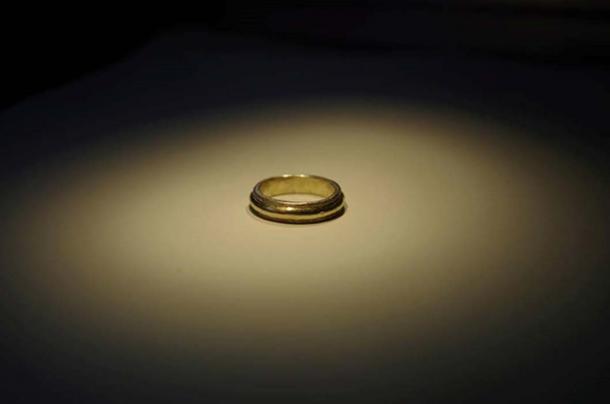Researchers piecing together the horror story of a 5th century massacre off the coast of Sweden have a new element to add to the tale – a gold coin and rings. But does this additional aspect provide more insight on the cause behind the unspeakable violence or only add to the mystery?
Partially buried bodies emerged at the ancient crime scene of Sandby Borg on the island of Öland in 2010. Since then, archaeologists have been trying to understand what happened at the site over 1,500 years ago.

Aerial view of excavations at Sandby Borg. (Sandby Borg)
Ars Technica reports that the massacre was so extensive that archaeologists have only been able to estimate the number of deaths – it’s in the hundreds. Some of the brutal executions suggest a morbid alteration to the Roman tradition of burying warriors with coins in their mouths; individuals were found at Sandby Borg with goat and sheep teeth stuffed in their mouths instead. Helena Victor, the project leader, said these individuals were given a “humiliation worse than death.”

A skeleton found at Sandby Borg. (Sandby Borg)
In 2013, Ancient Origins reported that archaeologists were able to create a frightening “snapshot” of what happened at the site through their discovery of two bodies of people lying next to the door of one of the huts. They were evidently slaughtered while trying to escape their attackers. Helene Wilhelmson, a researcher who specializes in the study of bones at Sweden’s Lund University said,
“I think they were ambushed in some way and people were running into the house trying to kill them and they didn’t have a chance. It’s more of a frozen moment than you normally see in archaeology… Something terrible happened, and everything just stopped.”
Helena Victor echoed this in her recent discussion with The Local “The bodies are lying as they were left, so there were no burials and it’s a moment frozen in time.” This suggests that the attack was sudden and brutal.
The recently uncovered coin confirms a previous hypothesis that inhabitants of the island were in contact with the Roman Empire. According to The Local, Emperor Valentinian III, who ruled between AD 425 and 455 is depicted on one side of the coin.

The coin recently unearthed at Sandby Borg. (Daniel Lindskog)
The recent find isn’t the first uncovering of treasure at the site, Atlas Obscura mentions that “silver brooches and bells, gold rings, and beads made of amber, glass, and cowrie shells” have all been previously found. That’s uncommon. Why wasn’t the site looted? Researchers suggest it may have become taboo to return to the location following the tragic event. Even the livestock was locked up and left to die – bizarre for a time when the scarce island resources would have been highly valued.
The unearthing of two gold rings added a new element of mystery to the site. Their size suggests they were made to fit a woman’s finger, yet no female skeletons have been successfully identified at the site to date. Discussing this find, Helena Victor said,
“We haven’t found treasure like this before, though we have found jewelry deposits. It’s always exciting to find gold – the team will always remember this day. It’s also important because we now know a lot more about the house where they were found. It seems to have had a special purpose, and it may have been the house of a chieftain or a minor king.”

A gold ring previously found at Sandby Borg. (Ludvig Papmehl-Dufay)
And now researchers are suggesting it may have been that wealth which incited the massacre at Sandby Borg. Not for theft, but perhaps because the wealthy inhabitants were seen as a threat due to their affluence and influence. We may never know for certain.